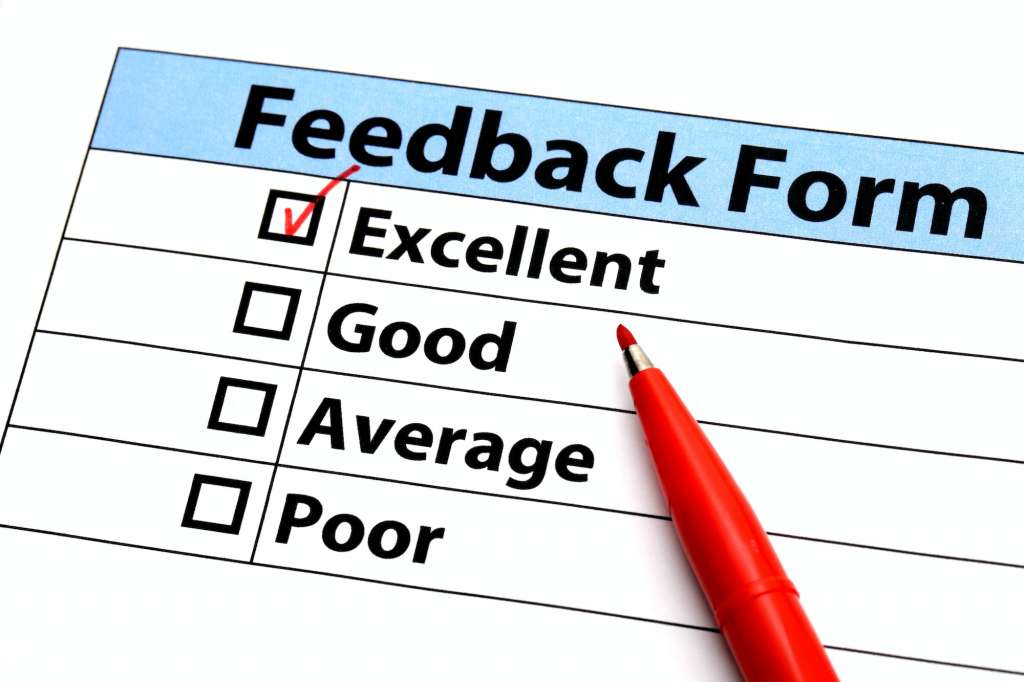As employers, it’s vital to acknowledge your employees and make them feel appreciated. Taking care of your employees is one of the best ways to treat your employees and lead to better organizational outcomes. There are many ways employers can make employees feel valued. Providing fair compensation and benefits is a start, but there are other essential ways employers can show employees they care. Simple gestures like saying “thank you,” asking about employees’ lives outside of work, and hosting events to boost morale can go a long way in making employees feel their efforts are meaningful.
Researchers have consistently found that when employees feel their employers genuinely care about them as people, they are more motivated and productive in their roles. By finding ways large and small to take care of your people, employers will be rewarded with higher retention rates, better customer satisfaction scores, and increased revenues and profits. The success of any organization relies heavily on its employees, so successful leaders acknowledge that and find ways to treat their employees well.

How SwagMagic can help your brand?
- Bulk Buy & Save on your gifts!
- Curate Customized Swag Boxes!
- Launch Your Store for your employees!
- Secure Swag Storage with us!
Let us delve into several approaches for treating employees well and elaborate on two modern methods: swag gifting and wellness passes.

Strategies and Their Implementation to Treat Employees at the Workplace To Enhance Productivity
Open Communication
Benefits: Open communication fosters trust, promotes collaboration, and enhances the sense of belonging among employees (Robbins & Coulter, 2005).
How to Implement:
- Regular Check-ins: Weekly or monthly meetings between managers and team members to discuss projects, concerns, and feedback.
- Anonymous Feedback Systems: Allow employees to voice concerns without fear of retaliation.
Fair Compensation and Benefits
Benefits: Adequate pay and benefits are directly linked to job satisfaction and commitment (Gerhart & Rynes, 2003).
How to Implement:
- Competitive Salary Analysis: Regularly compare your pay rates with market standards and adjust accordingly.
- Benefit Programs: Consider introducing or enhancing health insurance, retirement plans, and paid time off.
Opportunities for Growth and Development
Benefits: Career growth opportunities increase job satisfaction and reduced turnover rates (Noe, 2002).
How to Implement:
- Training Programs: Offer workshops, courses, and seminars to hone employees’ skills.
- Promotion from Within: Prioritize internal candidates when leadership positions become available.
Recognition and Rewards
Benefits: Recognizing and rewarding employees boost morale, motivation, and loyalty (Aguinis & Glavas, 2012).
How to Implement:
Curate the perfect box of handpicked gift they’ll love and send joy their way
- Employee of the Month: A simple yet effective way to spotlight outstanding performers.
- Yearly Awards: Organize yearly functions to award top performers in various categories.
Swag Gifting
Benefits: Swag gifting, i.e., providing company-branded merchandise, makes employees feel valued and promotes a sense of belonging (Berg, 2019).
How to Implement:
- Customized Merchandise: Items like T-shirts, mugs, and notebooks are branded with the company logo.
- Seasonal Gifts: Special gifts like calendars, diaries, or tech gadgets during festivals or holiday seasons.

Wellness Passes
Benefits: Wellness passes provide employees access to wellness activities like gym memberships, meditation sessions, or counselling, promoting overall well-being (Edington, 2001).
How to Implement:
- Partnerships with Wellness Providers: Collaborate with local gyms, meditation centers, or therapists.
- Flexible Options: Allow employees to choose their preferred wellness activity.
Employee well-being and satisfaction are paramount for the success of any organization. Adopting a multifaceted approach encompassing open communication, fair compensation, growth opportunities, recognition, swag gifting, and wellness passes can significantly enhance the workplace environment, leading to increased productivity and success.
Treating employees well goes beyond financial incentives. It encompasses holistic well-being, both at work and outside.
Work-Life Balance
Benefits: Ensuring employees have a healthy work-life balance reduces burnout and increases overall job satisfaction (Greenhaus, Collins, & Shaw, 2003).
How to Implement:
- Flexible Hours: Allow employees to have varied starting and ending times.
- Remote Work Options: Allow employees to periodically work from home or other locations.
- Unplugged Time: Encourage employees to avoid screens, emails, and work calls.
Inclusive and Diverse Workplace Culture
Benefits: A diverse workplace that promotes inclusion can boost creativity, enhance business performance, and improve employee morale (Cox & Blake, 1991).
How to Implement:
- Diversity Training: Conduct workshops to create awareness about unconscious biases and promote understanding among varied demographics.
- Recruitment Initiatives: Encourage hiring from a diverse talent pool.
- Employee Resource Groups: Create or support groups that cater to specific demographics, such as women, LGBTQ+ employees, or racial and ethnic minorities.
Team Building Activities
Benefits: Such activities improve collaboration, trust, and communication among team members (Klein et al., 2009).
How to Implement:
- Outings and Retreats: Organize trips or retreats that are not focused on work but rather on relaxation and bonding.
- Workshop Activities: Use team-building games and exercises during workshops.
- Feedback Sessions: Encourage teams to communicate openly about their dynamics and find ways to improve collaboration.

Health and Mental Health Initiatives
Benefits: Addressing physical and mental health improves employee well-being, reduces absenteeism, and boosts productivity (Goetzel et al., 2004).
How to Implement:
- On-site Health Services: Offer services like flu shots, health screenings, and counselling.
- Mental Health Days: Employees should take days off specifically for mental well-being.
- Awareness Campaigns: Create campaigns to destigmatize mental health issues and provide employee resources.

Encourage Continuous Learning
Benefits: When employees can continue learning, it boosts their morale, reduces turnover, and ensures your workforce remains competitive (Rowden, 2002).
How to Implement:
- Tuition Reimbursement: Offer to cover or subsidize courses related to their roles.
- Workshop Series: Regularly bring in industry experts to share insights and knowledge.
- Online Courses: Provide subscriptions to platforms like Coursera, Udemy, or LinkedIn Learning.
Transparent Evaluation Processes
Benefits: Transparent evaluation ensures employees know where they stand and what is expected of them, reducing anxiety and boosting motivation (London, 2003).
How to Implement:
- Regular Performance Reviews: Instead of annual reviews, opt for quarterly or bi-annual ones.
- 360-Degree Feedback: Allow peers to contribute feedback, ensuring a more comprehensive view.
- Clear Evaluation Criteria: Ensure employees know how they are being evaluated.
A holistic approach to treating employees well must be multifaceted and tailored to the needs of the individual and the organization. With the right combination of strategies, businesses can ensure a motivated, productive, and satisfied workforce.

Ethical Treatment and Non-discrimination
Benefits: Ethical treatment promotes trust and commitment, while non-discrimination ensures a level playing field for all employees, fostering an environment where everyone can thrive (Treviño et al., 2006).
How to Implement:
- Ethics Training: Conduct regular workshops and training on company ethics and values.
- Clear Policies: Develop and communicate a clear anti-discrimination and harassment policy.
Employee Autonomy
Benefits: Granting employees autonomy over work boosts their intrinsic motivation and job satisfaction (Deci & Ryan, 1987).
How to Implement:
- Trust-based Management: Empower employees to make decisions related to their tasks.
- Flexible Tasking: Allow employees to choose projects or tasks they are interested in.
Celebrate Personal Milestones
Benefits: Celebrating personal events like birthdays or anniversaries fosters a family-like environment, promoting loyalty and connectivity (Grawitch et al., 2010).
How to Implement:
- Personal Celebration Calendar: Keep a calendar for employees’ personal milestones.
- Surprise Elements: Organize surprise events or give small tokens of appreciation.

Encourage Breaks and Downtime
Benefits: Regular breaks boost creativity, reduce stress, and prevent burnout (Hunter & Wu, 2016).
How to Implement:
- Scheduled Breaks: Implement regular short break intervals during work hours.
- Rest Zones: Designate areas in the office where employees can relax and rejuvenate.
Foster a Culture of Innovation
Benefits: A culture encouraging innovation ensures employees remain engaged and invested in their roles (Gupta et al., 2007).
How to Implement:
- Idea Platforms: Implement platforms where employees can share innovative ideas.
- Reward System: Recognize and reward innovative ideas, even if they don’t always work out.
Social Responsibility Initiatives
Benefits: Being part of a company that contributes positively to society increases employees’ pride and loyalty (Bhattacharya et al., 2008).
How to Implement:
- CSR Programs: Initiate or participate in community service and environmental sustainability programs.
- Volunteer Days: Offer days off for employees to participate in charity or community service of their choice.

Employee Surveys and Actionable Feedback
Benefits: Employees’ Regular feedback helps organizations continuously improve, ensuring that their needs and concerns are addressed (Church et al., 2001).
How to Implement:
- Regular Surveys: Conduct monthly or quarterly surveys to gauge employee sentiments.
- Feedback Loops: Ensure that feedback received is acted upon and communicated back to employees.
For organizations to succeed in an ever-evolving landscape, they must prioritize the well-being and satisfaction of their employees. Adopting a holistic mix of the above strategies will ensure a motivated, content, and high-performing workforce.

SwagMagic: Revolutionizing Corporate Gifting for Enhanced Employee Morale and Treat Them with Respect and Dignity
In the heart of the city, SwagMagic’s neon sign gleams invitingly. As the doors open, QuantumTech’s HR team seeks unique gifts to uplift employee morale. Mia, SwagMagic’s consultant, guides them through swag stores and tailored swag boxes filled with tech gadgets, wellness products, and curated snacks.
Jenna eyes ergonomic desk toys, perfect for their developers, while Marcus admires an intelligent water bottle syncing with mobile devices. Mia introduces their digital platform, offering personalized e-gift cards for a touch of choice.
Before checking out, Mia suggests including handwritten notes of gratitude in each package. The QuantumTech team leaves with gifts and meaningful tokens of appreciation.

How to take care of your employees?
Taking care of your employees involves showing them they are valued through fair compensation and benefits, opportunities for growth and development, flexibility and work-life balance, recognition programs highlighting achievements big and small, and cultivating an open, supportive company culture where employees feel safe, respected, and engaged. Treating employees well increases job satisfaction, engagement, innovation, and retention.
What should an employer do to ensure good treatment of employees?
Employers should treat employees with dignity and respect by providing fair compensation, reasonable workloads, opportunities for growth, a healthy work environment free from harassment, and open communication. Taking these basic steps helps demonstrate that employers value their employees and want to see them succeed.
Should employers pay for employee offsite activities?
Providing opportunities for employees to connect outside of work, such as paying for team-building activities or offsite social events, can boost morale, collaboration, and loyalty. While not always feasible or expected, covering some costs associated with these offsite bonding experiences shows that employees’ well-being and team cohesion matter. Even small gestures go a long way.
References
- Aguinis, H., & Glavas, A. (2012). What we know and don’t know about corporate social responsibility: A review and research agenda. Journal of Management, 38(4), 932-968.
- Berg, M. (2019). The impact of gift-giving on relationship-building in business contexts. Journal of Business Ethics, 155(3), 699-717.
- Denison, D. R. (1990). Corporate culture and organizational effectiveness. John Wiley & Sons.
- Edington, D. W. (2001). The role of health and wellness in the workplace. In Handbook of industrial, work & organizational psychology (Vol. 2, pp. 391-405). SAGE Publications.
- Gerhart, B., & Rynes, S. (2003). Compensation: Theory, evidence, and strategic implications.

Leave a Comment